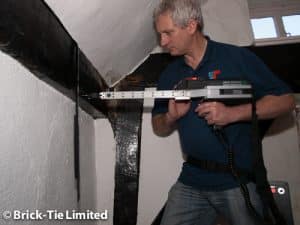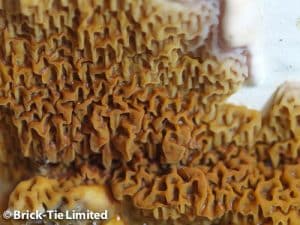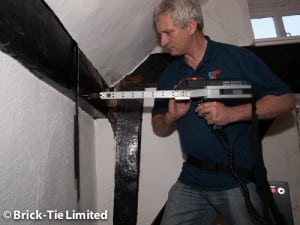Damp and dry rot in listed buildings
Any old house can suffer from damp and dry rot problems; age means there’s more time to get exposed to bad weather and infestations. However, there are other reasons why old houses need more care, if they are to remain dry and free from timber decay.
There are two main differences between modern and older housing: Walls of old houses are usually solid, lacking a cavity to protect the inner face of walls from rainwater penetration and, they are built using lime mortar, rather than cement.
Lime mortar is softer than cement and as a result tends to allow micro-movement without cracking. It will absorb water, but more importantly, it also allows water to evaporate freely, so once wet, it tends to dry out faster than cement. Whilst these are positives there are also one or two negative effects of lime. They tend to break down faster so regular re-pointing may be required and walls built with lime are more prone to rising damp.
Dry rot is more common in older and listed buildings than in newer dwellings. This is due in most part to the design of older buildings and the fact that many listed houses and commercial buildings are a little grander than the average. As a result they will have more ostentatious features, such as parapet walls at roof level, deep box or valley gutters and large multi-flue chimneys. All these features mean that they are ‘high maintenance’ and so are more likely to suffer water ingress and subsequent dry rot attacks, than our modern average semi.

Other reasons for problems are sadly due to poorly thought out alterations and ?improvements?. These include application of hard cement pointing to replace perished lime mortar and replacing lime render with cement render. These cause many problems. The raising of path levels when new drives are laid blocks air bricks, leading to timber decay including dry rot and worsening rising damp. Bricking up fireplaces without leaving them ventilated is another common problem.
It should be born in mind though, that whilst they have particular issues, listed buildings and older homes can be maintained damp and dry rot free without damaging their fabric, provided a few simple rules are followed.
These include using traditional materials where suitable and practical; preserving the fabric rather than replacing it; using modern methods appropriately when these can help without damaging the building and most importantly, treating every house on its own merits to avoid applying a ‘one size fits all’ approach, which will do more harm than good in many cases.
Whilst traditional materials are preferred, professionals should still keep modern techniques in mind. Sometimes the reason for failure is the very fact that the ‘traditional’ way has been inadequate, or counter productive.

Here at Brick-Tie Preservation our surveyors are conversant with the latest technology in building preservation, whilst at the same time ‘fully ‘lime aware’ and conservation orientated. We think old houses are treasures, this applies whether they are listed or not and we have a deep understanding of traditional building methods, the materials and how they can be conserved and used in the modern world. We never forget though, that houses are built for people to live in. Comfort, warmth and utility are important and that’s why, when needed, we careful apply the very latest materials and techniques alongside traditional methods – achieving our customers needs whilst protecting their investment and offering value also.
Call Bryan Hindle or Wayne Earnshaw for further information on damp and dry rot in listed buildings or damp and timber surveys in traditional buildings – 0800 591 541
Useful outside resources for information include The Society for the Protection of Ancient Buildings – SPAB.
Why not pop over to our managing directors blog for in depth details about the value of lime pointing
We cover the whole of Yorkshire for damp and dry rot in ancient and listed buildings.


